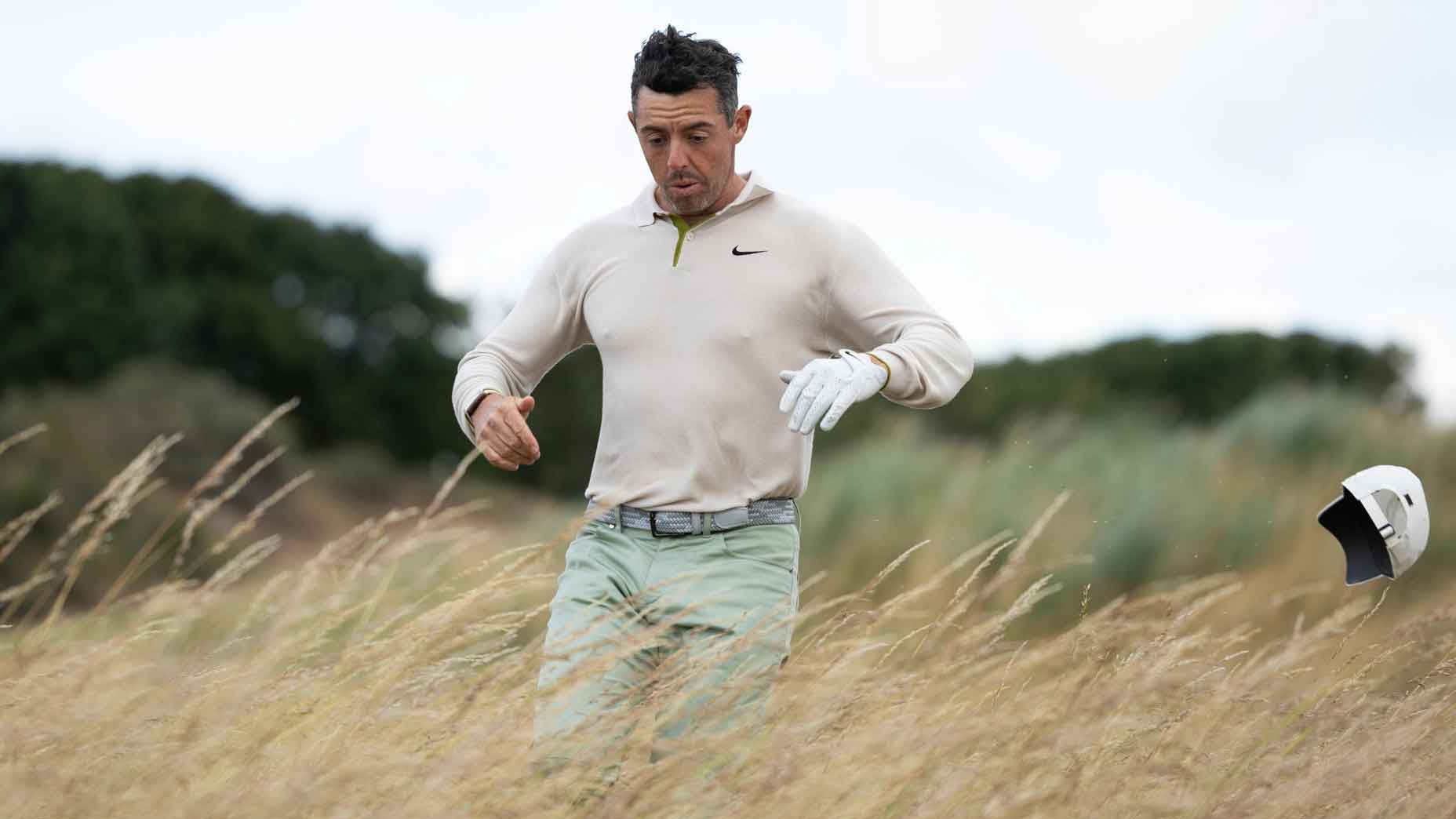Anyone who has watched this week’s Open Championship knows just how much windy conditions can impact golf shots.
Pros are being forced to keep the ball low and adjust their speeds on the putting surface. And the players who are doing this effectively are seeing the most success at Royal Liverpool.
Since playing in windy conditions can be a challenge, I’m giving you tips on how the right attitude, technique, and ability can help you become a great wind player. Take a look at some advice below.
1. React, don’t overreact
There are some things in golf that you can’t control — and the weather conditions is one of them.
Since some days are just going to be windy, you must recognize this and be calm. Instead of complaining or overreacting to the situation, accept the challenge, bring the right attitude, and react appropriately. By doing this, you’ll give yourself the best opportunity to shoot low.
2. Gauge how much on the range
Practice before any round is important, but it’s even more critical when you’re dealing with windy conditions. By doing this, it will help you gauge the speed of the wind, and will give you time to determine how many clubs of wind you’re dealing with.
For instance, if you would normally hit your pitching wedge from a distance that requires an 8-iron, this would be considered a two-club wind.
Remember, the higher the wind speed, the more you need to adjust.
3. Readjust if needed on the course
While the range is a good starting point to measure the amount of wind you’ll have to deal with, the course may be different — as it may be more or less.
Once you determine how much you think you’ll need based on your warm up, be willing to adjust as the wind either increases or decreases during your round.
When you think you’ve hit a perfect shot, but it ends up short, this is a sign that you’ll need to increase the amount of club you’re using to avoid the impacts of the wind.
4. More club: smaller swing and less spin
Full swings have more speed, therefore the ball will launch higher. The higher you hit the ball in windy conditions, the more it will be impacted.
A great choice in the wind is to take a little extra club and make a smaller swing. A good barometer is about three-quarters.
The smaller the swing, the less speed, lift, and spin your ball will have.
5. Hit more chips than pitches
Super windy days can affect your short game as well!
Instead of hitting high pitch shots that the wind can eat up and move off of your line, I recommend going with lower shots like chips and bump-and-runs. By using those options, you’ll have more control of your ball, helping you avoid the wind and putting you closer to the pin.
6. Knock downs
Knock downs love to go straight, and they’re also great on really windy days. I play a lot of golf in Florida, and a knowing how to hit a knock down is almost a necessity.
Here’s how to execute this type of shot.
Position your ball center to slightly back in your stance. Take your normal setup, and then lean your weight and your upper body slightly towards the target.
If your ball position is back, you may want to drop your front foot slightly back to realign your shoulders and make it easier to keep your weight on that front foot throughout your swing.
As you swing, keep your weight on your front foot. This will also help limit the length of your backswing, which is important, as your follow-through should also be shorter.
Finally, keep your arms moving forward on your follow-through, maintaining the shaft lean forward and minimizing the loft of the face at impact.
7. Use less loft on fairway woods
There’s nothing more satisfying than watching a fairway wood sail into the air. Given the amazing loft of these clubs, when you face a shot that’s downwind, this is a good option.
However, when hitting into the wind, make a different club selection. Using a less-lofted fairway wood (like a 5- or 3-wood) might be a better option, as they can help cut through the wind, maximizing both distance and roll.
8. The higher you hit the ball, the more you should react
Some golfers hit the ball higher than others. Generally, the higher the clubhead speed, the higher the ball flight.
If you’re a player who launches the ball high, you’ll need to react by making club adjustments. This means adding a club when hitting into the wind, and subtracting for downwind.
The higher you hit it, the more the wind will tend to curve your golf ball.
9. Make the necessary putting adjustments
As mentioned above, windy conditions will also impact the short game — and this will sometimes include your putting.
The faster the green, the more the wind will influence your putting speed. But in most cases, it takes an extremely windy day.
One training aid I like to use to help feel both distance control and breaks is the True Aim Marker. So whether you’re putting with wind or during a perfectly sunny day, you’ll have confidence with each stroke.
10. The wind impacts everyone
Regardless of how windy the conditions are, you must remember this: It’s impacting every other player on the golf course too.
This is where the ability to react and have a good attitude will be a huge advantage. So realize that everyone has these same challenges, adapt your game, and be smarter with how you play in order to shoot your best.
